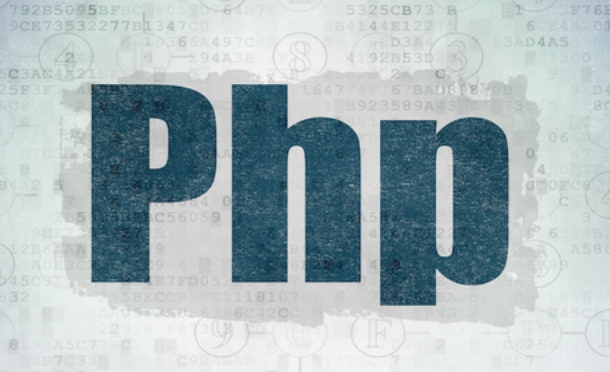When configuring PHP on Windows, you need to pay attention to version selection, environment variable settings and integration with the server. 1. Download the appropriate PHP version. It is recommended to use the Thread Safe version and decompress it to a simple path such as C:\php to avoid the path with Chinese or spaces; 2. Configure environment variables, add the PHP directory in the system Path and verify the installation through php -v; 3. Modify the php.ini file, set extension_dir, enable necessary extensions such as mysqli, configure the time zone Asia/Shanghai, etc.; 4. If you use Apache, you need to load php_module in httpd.conf and specify the correct DLL path and PHPIniDir, and test whether the configuration is successful by creating info.php. Frequently asked questions include path errors, not enabled extensions, and improper Apache configuration.

Configuring PHP is actually not too difficult on Windows, but it is easy for beginners to get into tricks. The key is to select the version, configure the environment variables, and enable the server (such as Apache or Nginx) to correctly recognize PHP.

1. Download the appropriate PHP version
First, go to the PHP official website to download the Windows binary package. Pay attention to choosing "Thread Safe" or "Non-Thread Safe". If you are using Apache mod_php, generally choose Thread Safe. Download the ZIP compression package and decompress it to a fixed directory, such as C:\php .

Frequently asked questions: Some people fail to unzip the file directly after downloading it or have spaces in the path, which will cause the subsequent configuration to fail. It is recommended that the path be as simple as possible, such as not bringing Chinese or spaces.

2. Configure environment variables
In order to enable PHP to be used in the command line, you need to add the PHP installation path to the system environment variable:
- Open System Properties → Advanced System Settings → Environment Variables
- Find
Pathin "System Variables" and click Edit - Add the directory where you unzipped PHP, for example,
C:\php
After completion, open the command prompt and enter php -v . If you see the version number, it means that this step is successful.
3. Configure the php.ini file
There will be a php.ini-development or php.ini-production in the PHP decompression directory, which you can copy and rename to php.ini .
Commonly used modifications include:
-
extension_dir: Set the path of the extension directory, such as"ext" - Enable common extensions: remove the semicolons in front of such type
;extension=mysqli - Set time zone:
date.timezone = Asia/Shanghai
These settings will affect PHP's behavior, such as connecting to the database, whether the date function reports an error, etc. Don't forget to save the file.
4. Use with Apache (optional)
If you use Apache, you need to have it load the PHP module. Taking XAMPP as an example, in Apache's configuration file httpd.conf you should ensure that there are contents similar to the following:
LoadModule php_module "C:/php/php8apache2_4.dll" AddHandler application/x-httpd-php .php PHPIniDir "C:/php"
Note that the path should be forward slash / or double backslash \\ , otherwise Apache may fail to start.
Test method: Put an info.php file in the root directory of the website, and the content is <?php phpinfo(); ?> . If you can see the PHP configuration information on this page, it means that it is successful.
Basically that's it. Points that are easy to ignore during the configuration process include path errors, failure to enable necessary extensions, and the Apache configuration has written the DLL path incorrectly. Just take it step by step, it is not complicated but the details cannot be missed.
The above is the detailed content of How to configure PHP on Windows?. For more information, please follow other related articles on the PHP Chinese website!

Hot AI Tools

Undress AI Tool
Undress images for free

Undresser.AI Undress
AI-powered app for creating realistic nude photos

AI Clothes Remover
Online AI tool for removing clothes from photos.

Clothoff.io
AI clothes remover

Video Face Swap
Swap faces in any video effortlessly with our completely free AI face swap tool!

Hot Article

Hot Tools

Notepad++7.3.1
Easy-to-use and free code editor

SublimeText3 Chinese version
Chinese version, very easy to use

Zend Studio 13.0.1
Powerful PHP integrated development environment

Dreamweaver CS6
Visual web development tools

SublimeText3 Mac version
God-level code editing software (SublimeText3)
 PHP Variable Scope Explained
Jul 17, 2025 am 04:16 AM
PHP Variable Scope Explained
Jul 17, 2025 am 04:16 AM
Common problems and solutions for PHP variable scope include: 1. The global variable cannot be accessed within the function, and it needs to be passed in using the global keyword or parameter; 2. The static variable is declared with static, and it is only initialized once and the value is maintained between multiple calls; 3. Hyperglobal variables such as $_GET and $_POST can be used directly in any scope, but you need to pay attention to safe filtering; 4. Anonymous functions need to introduce parent scope variables through the use keyword, and when modifying external variables, you need to pass a reference. Mastering these rules can help avoid errors and improve code stability.
 How to handle File Uploads securely in PHP?
Jul 08, 2025 am 02:37 AM
How to handle File Uploads securely in PHP?
Jul 08, 2025 am 02:37 AM
To safely handle PHP file uploads, you need to verify the source and type, control the file name and path, set server restrictions, and process media files twice. 1. Verify the upload source to prevent CSRF through token and detect the real MIME type through finfo_file using whitelist control; 2. Rename the file to a random string and determine the extension to store it in a non-Web directory according to the detection type; 3. PHP configuration limits the upload size and temporary directory Nginx/Apache prohibits access to the upload directory; 4. The GD library resaves the pictures to clear potential malicious data.
 Commenting Out Code in PHP
Jul 18, 2025 am 04:57 AM
Commenting Out Code in PHP
Jul 18, 2025 am 04:57 AM
There are three common methods for PHP comment code: 1. Use // or # to block one line of code, and it is recommended to use //; 2. Use /.../ to wrap code blocks with multiple lines, which cannot be nested but can be crossed; 3. Combination skills comments such as using /if(){}/ to control logic blocks, or to improve efficiency with editor shortcut keys, you should pay attention to closing symbols and avoid nesting when using them.
 How Do Generators Work in PHP?
Jul 11, 2025 am 03:12 AM
How Do Generators Work in PHP?
Jul 11, 2025 am 03:12 AM
AgeneratorinPHPisamemory-efficientwaytoiterateoverlargedatasetsbyyieldingvaluesoneatatimeinsteadofreturningthemallatonce.1.Generatorsusetheyieldkeywordtoproducevaluesondemand,reducingmemoryusage.2.Theyareusefulforhandlingbigloops,readinglargefiles,or
 Tips for Writing PHP Comments
Jul 18, 2025 am 04:51 AM
Tips for Writing PHP Comments
Jul 18, 2025 am 04:51 AM
The key to writing PHP comments is to clarify the purpose and specifications. Comments should explain "why" rather than "what was done", avoiding redundancy or too simplicity. 1. Use a unified format, such as docblock (/*/) for class and method descriptions to improve readability and tool compatibility; 2. Emphasize the reasons behind the logic, such as why JS jumps need to be output manually; 3. Add an overview description before complex code, describe the process in steps, and help understand the overall idea; 4. Use TODO and FIXME rationally to mark to-do items and problems to facilitate subsequent tracking and collaboration. Good annotations can reduce communication costs and improve code maintenance efficiency.
 Quick PHP Installation Tutorial
Jul 18, 2025 am 04:52 AM
Quick PHP Installation Tutorial
Jul 18, 2025 am 04:52 AM
ToinstallPHPquickly,useXAMPPonWindowsorHomebrewonmacOS.1.OnWindows,downloadandinstallXAMPP,selectcomponents,startApache,andplacefilesinhtdocs.2.Alternatively,manuallyinstallPHPfromphp.netandsetupaserverlikeApache.3.OnmacOS,installHomebrew,thenrun'bre
 How to access a character in a string by index in PHP
Jul 12, 2025 am 03:15 AM
How to access a character in a string by index in PHP
Jul 12, 2025 am 03:15 AM
In PHP, you can use square brackets or curly braces to obtain string specific index characters, but square brackets are recommended; the index starts from 0, and the access outside the range returns a null value and cannot be assigned a value; mb_substr is required to handle multi-byte characters. For example: $str="hello";echo$str[0]; output h; and Chinese characters such as mb_substr($str,1,1) need to obtain the correct result; in actual applications, the length of the string should be checked before looping, dynamic strings need to be verified for validity, and multilingual projects recommend using multi-byte security functions uniformly.
 Learning PHP: A Beginner's Guide
Jul 18, 2025 am 04:54 AM
Learning PHP: A Beginner's Guide
Jul 18, 2025 am 04:54 AM
TolearnPHPeffectively,startbysettingupalocalserverenvironmentusingtoolslikeXAMPPandacodeeditorlikeVSCode.1)InstallXAMPPforApache,MySQL,andPHP.2)Useacodeeditorforsyntaxsupport.3)TestyoursetupwithasimplePHPfile.Next,learnPHPbasicsincludingvariables,ech






